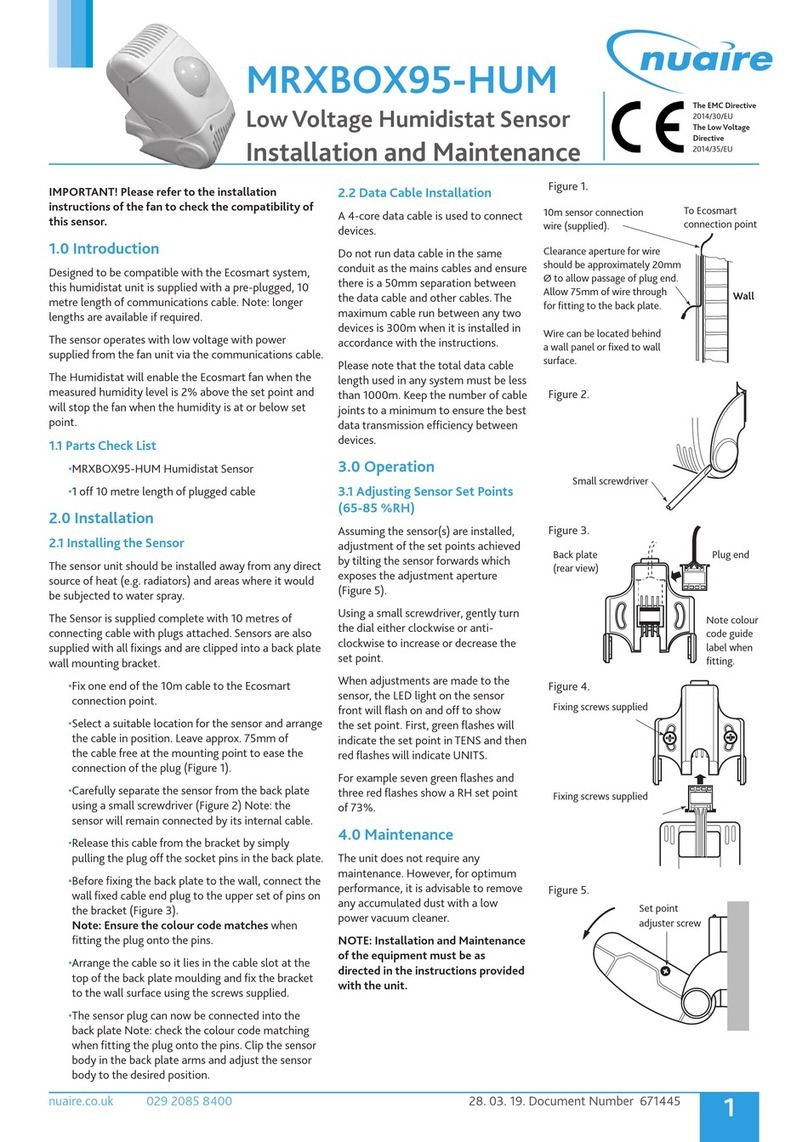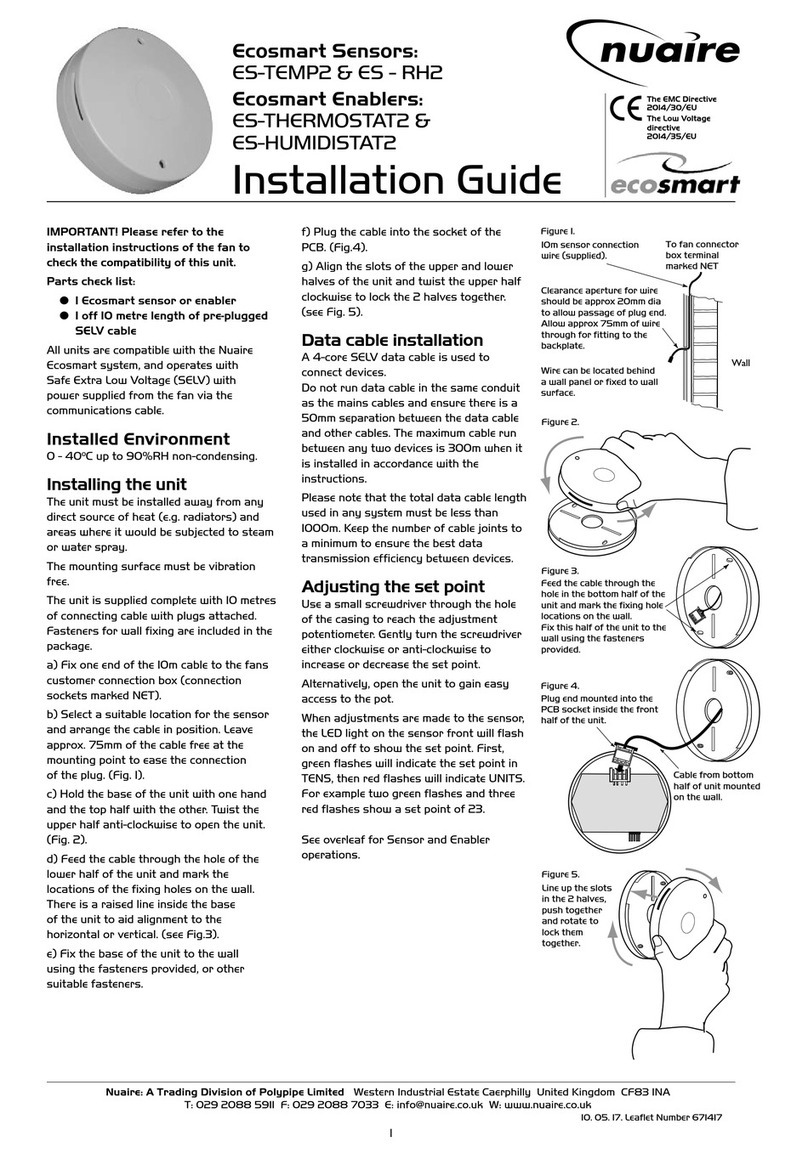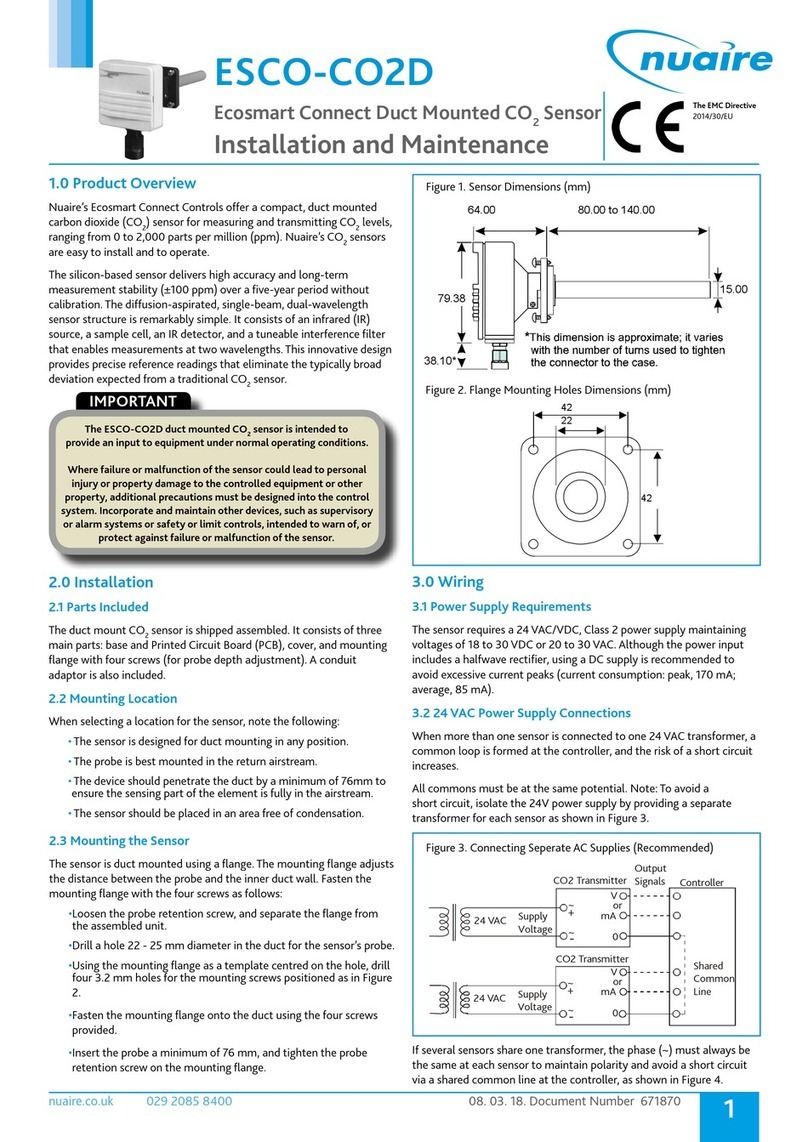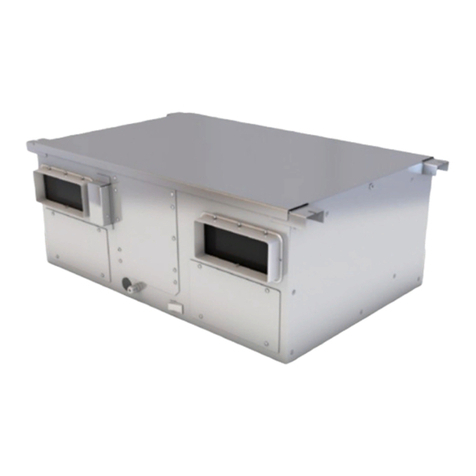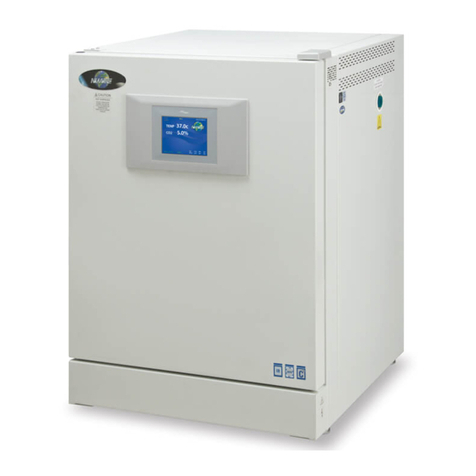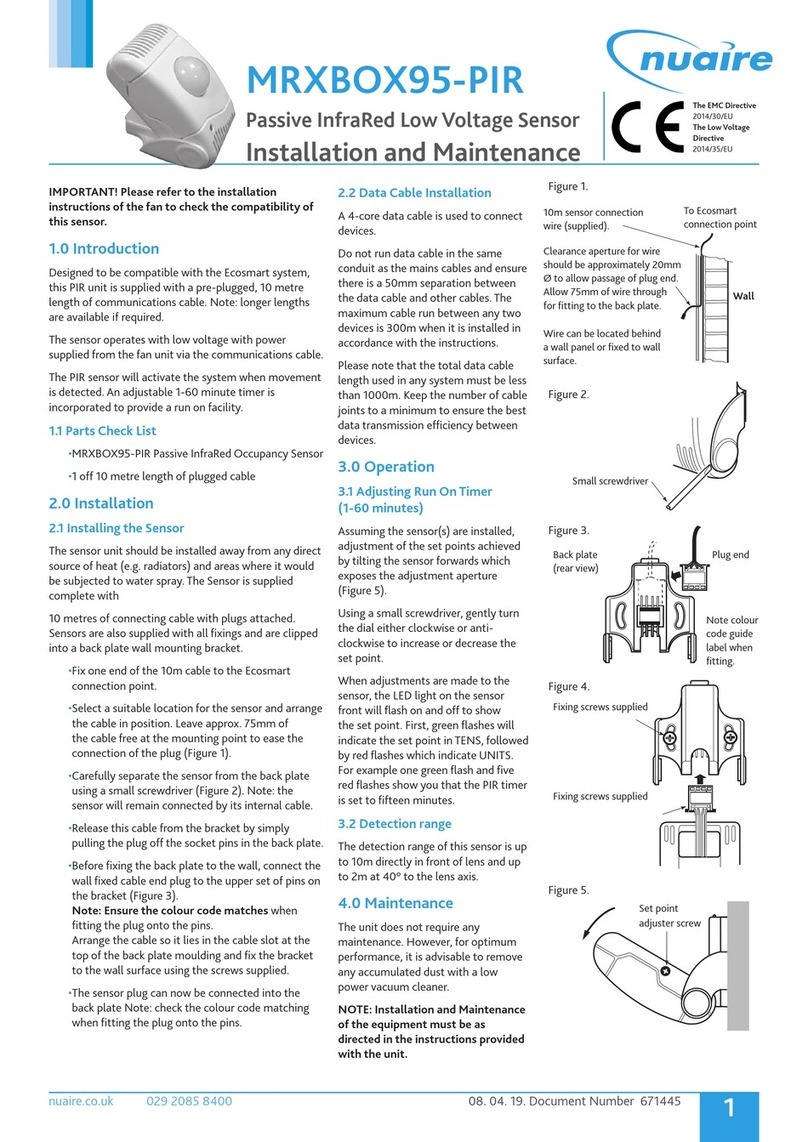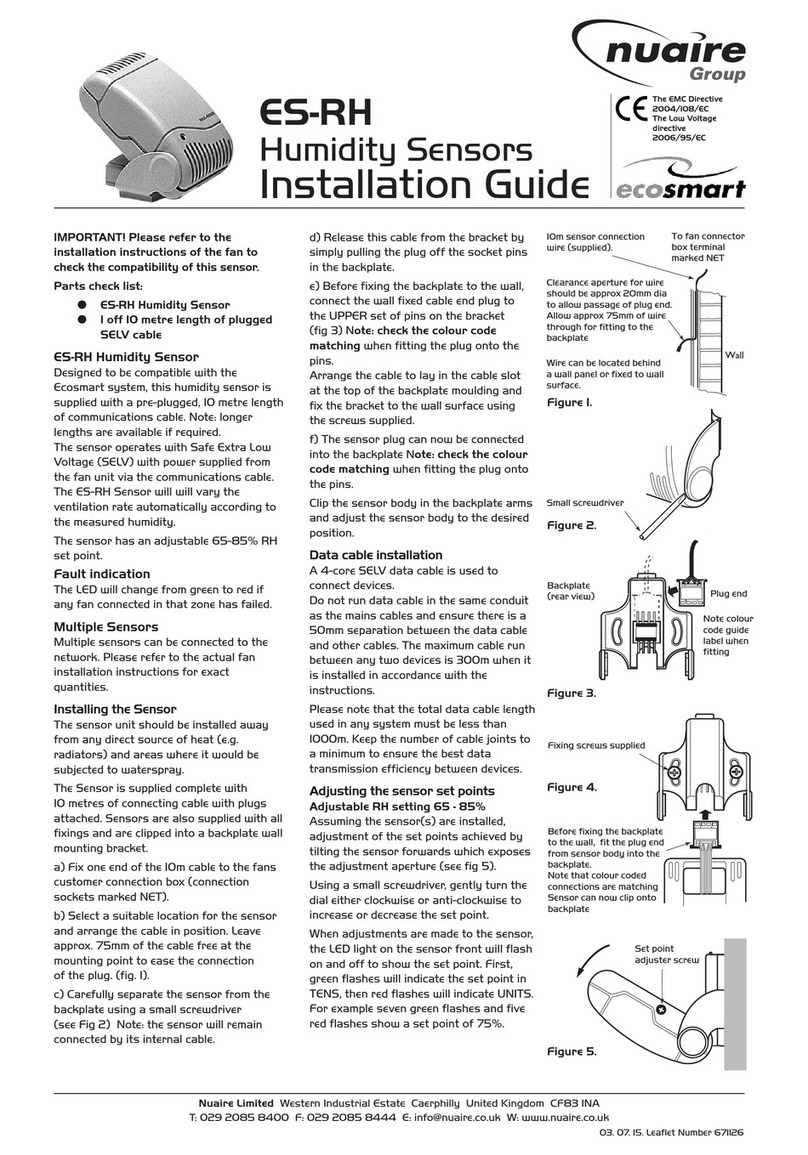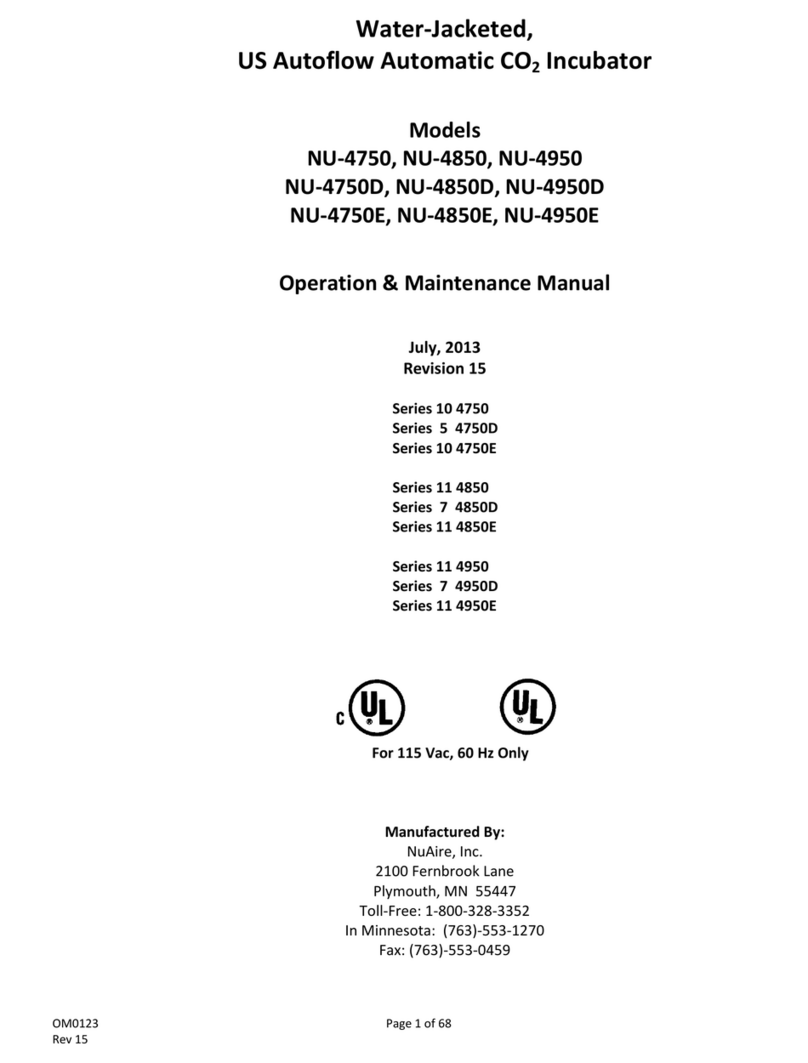
OM0245 Page 4 of 53
Rev 6 March/2022
1.5 Incubator Construction
The outer shell of the air-jacketed Incubator is cold-rolled steel with a powder coat paint finish. The front frame surface of
the outer shell is heated with a foil type heater directly attached behind the front perimeter opening.
The front frame perimeter heater, as well as the outer front door heater is duty cycle controlled (manually adjusted for
specific ambient conditions) to balance the heat that reaches the chamber and thus reduces the possibility of condensation
forming on the inner glass door and the inner chamber walls.
The inner chamber is 16-gauge, type 304L, polished stainless steel using crevice-free construction, which provides an easily
cleanable inert surface that does not in itself promote biological growth. In addition, all shelves, shelf supports, and guide
rails are easily removable and can be autoclaved separately if so desired.
Remember: The chamber environment is not selective. The growth environment is applied equally to all microorganisms
(specimens and contaminates) within the chamber.
1.6 Incubator Humidity
A relative humidity level of up to 90% is achieved in the Incubator by the use of a stainless-steel pan filled with distilled
water no purer than 1 megaohm, and placed on the bottom of the chamber. It is necessary to set the duty cycle of the door
and front perimeter heater in proper proportions to reduce the possibility of condensation forming on the glass inner door
and the chamber walls. It is also important to thoroughly wipe the walls and the glass door clean before adding the
humidity water pan. Condensation will occur more readily at contamination points. There is no electronic sensing and thus
no automatic control of the humidity level in the air jacketed Incubator. An air pump injects fresh air into the chamber at a
preset duty cycle to reduce condensation forming on the chamber walls and front glass door. The air injections are settable
by the user to help control condensation. (See section 8.8 for this option.)
1.7 Cabinet Ventilator Fan
An axial fan is mounted to the bottom cover panel of the Incubator and runs continuously when the unit is switched on.
This fan pulls air into the cabinet shell thru the top panel louver openings and discharges it out of the bottom of the unit.
The operation of this fan is necessary to assure accurate chamber temperature control over the 60°F to 85°F (15°C to 30°C)
ambient temperature range that the equipment may see.
1.8 Safety Instructions
These safety instructions describe the safety features of the INVITROCELL Incubator.
The incubator has been manufactured using the latest technological developments and has been thoroughly tested before
delivery. It may, however, present potential hazards if it is not used according to the intended purpose or outside of
operating parameters. Therefore, the following procedures must always be observed:
•The incubator must be operated only by trained and authorized personnel.
•For any operation of this unit, the operator must prepare clear and concise written instructions for operating and
cleaning, utilizing applicable safety data sheets, plant hygiene guidelines, and technical regulations, in particular.
owhich decontamination measures are to be applied for the incubator and accessories
owhich protective measures apply while specific agents are used
owhich measures are to be taken in the case of an accident
•Repairs to the device must be carried out only by trained and authorized expert personnel.
•Keep these operating instructions close to the unit so that safety instructions and important information are
always accessible.
•Should you encounter problems that are not detailed adequately in the operating instructions, please contact your
NuAire Representative of NuAire technical Services.

